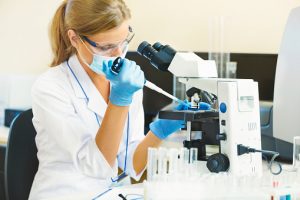 Osteoporosis is a disorder of the bone that causes them to become weak and brittle to the extent where a minor fall could lead to a fracture. Treatment for the condition often includes reducing the risk of called and prescription drugs that help to reduce bone loss.
Osteoporosis is a disorder of the bone that causes them to become weak and brittle to the extent where a minor fall could lead to a fracture. Treatment for the condition often includes reducing the risk of called and prescription drugs that help to reduce bone loss.
While current treatment regimens have provided some relief for patients, it may still be hard to maintain for some individuals, as well as the implemented drugs having a host of side effect that may put off patients.
Advertisement
This may change, however, as researchers from The University of Queensland and McGill University have identified 153 new gene variants associated with loss of bone mineral density, which often leads to fractures in those affected by osteoporosis.
Bone weakening condition
Osteoporosis is a condition of reduced bone density and increased fragility of bones. This leads to abnormally porous bone that is compressible like a sponge, leading to bone weakness and frequent fractures.
Normally our bones are composed of adequate amounts of protein, collagen, and calcium; giving bone its strength. However, in cases of osteoporosis, the structure and strength of bone are compromised.
Osteoporosis can affect both men and women, but postmenopausal women make up the majority of cases. Over 40 million people in the United States are estimated to have the bone disease with an estimated 1,000 fractures happening every hour around the world due to osteoporosis complications.
Researchers, Dr. John Kemp and Professor David Evans, discovered a gene called CPC6 which has demonstrated a strong association to osteoporosis-like symptoms.
“What makes this gene particularly interesting is that it encodes a protein that is present on the surface of cells, making it a potential candidate for a drug target,” Professor Evans said.
Identifying genes to find a treatment
The team’s study involving animal models found that removing the gene in question helped to increase bone thickness; a crucial factor in maintaining bone strength. They believe that bone health has a strong inherited component which could make help identify those having the trait become life-threatening fractures occur.
The study was a collaboration of both schools and involved more than 140,000 participants from the UK biobank evaluating genome structure. Each subject also had their bone marrow assessed via ultrasound of the heel.
Advertisement
If was found that the osteoporosis implicated new gene accounted for 12 percent of all heritability of the disease.
The researchers are optimistic that this finding could help identify individuals who would benefit most from preventative measures against osteoporosis related fractures. Addition studies are currently underway involving more than down the people to help shed more light on the genetics of osteoporosis and help to use this information to develop new treatments.
Related: Osteoporosis: Causes, symptoms, diagnostic tests, and how to treat
